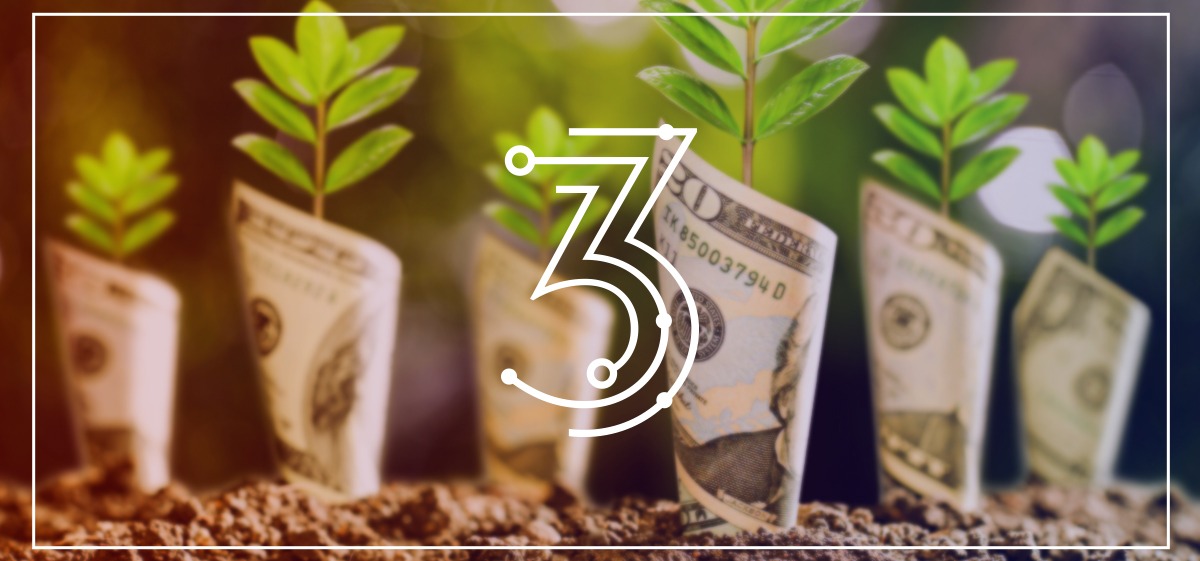Some call it “seed funding”, others “seed capital”, but the most common term is “seed money”. Down below I will explain how and where you can find seed money.
Essentially, it is a simple concept: seed money refers to the initial capital you need to get a business up and running until it starts producing results. In other words, the money you use as an initial investment will generate more money in return.
That’s what any type of business at the start of the road aims or it’s already doing. However, in the strict sense of the term, a startup is not just any type of business in its infancy. Let’s say you want to set up a family farm with a few dozen or hundreds of sheep and produce organic dairy products of exceptional quality and local specificity. You will, of course, need seed money. Then, in a few years, this can develop into a small business that will probably generate a turnover of hundreds of thousands of euros per year and will keep its size for a long time, ensuring the prosperity of a family.

Maybe, at some point, a global dairy company will consider buying the farm and its brands. However, the family will oppose it because they know an inclusion in a dairy conglomerate will diminish their award-winning traditional elements. They have no financial ambitions that go beyond the worry-free life they already enjoy.
It is a good thing such businesses exist and, even better, that forums like the European Union encourage local production, but startups are another breed.
Ambitions and the logic of startups

A startup is primarily defined by its technological component, now almost mandatory to be digital, generating innovation in various fields. Innovation involves creating markets or market segments, new products and services, plus disruptive business behaviour.
Getting back to the example with the family farm, they could start an exciting collaboration with a company focused on innovation that recommends product management to be handled through the Blockchain system we talked about in a previous article series. The farm would obtain an accurate track record, including monitoring each batch from any type of dairy product, tracing back to the group of animals where it started. Of course, the farm would not become disruptive, but the startup we assume is specialized in applying the Blockchain to family farming is.
Seed funding and the successive financing stages

If the dairy business can efficiently operate at a family business level, the same cannot be said about a startup aiming to apply Blockchain principles to agriculture. The latter will need many customers and a global market to become profitable and relevant. Businesses relying on technology are the exact opposite of family businesses: an exponential growth component, which leads almost without exception to the so-called Mergers & Acquisitions, meaning that global companies acquire them. An alternative would be going public on stock exchanges.
Following the same logic, seed money is only the initial stage of financing. Once startups approach the breakeven point (when costs and revenues are equal), investment funds or Venture Capital companies aiming to take good and profitable ideas even further set their eyes on them. For these categories, seed money comes with somewhat looser obligations, based on more relaxed economic calculations and more generous terms, but also with substantial benefits if they invest early.
Where to find seed money?

A business that is just moving from the pen and paper stage to real-life implementation can only benefit from lower financing than one already turned to profit. The potential investors are fewer in numbers. I would list three main categories of investors:
1. Family and friends – are you ashamed to ask for financial support? If that’s the case, you may not trust your idea enough. Get rid of complexes – you are not asking them for anything for free. On the contrary, you allow them to be involved in a business out of which they will have great financial satisfaction. In addition, they get to change the world alongside you.
In any case, this type of financing is essential and must be accessed as soon as possible. If you can’t get money, then get services (from car transportation to graphic design, assuming you have a close one who can help you with something like that), but not for free, but in exchange for benefits.
2. Angel Investors/Business Angels – the category where I belong. Unlike family and friends, this includes investors with a very clear specialization: evaluating and optimizing businesses in their early stages of existence. Compared to Venture Capitalists, who are mainly profit-oriented, Angel Investors are more innovation-oriented and willing to take risks. In addition to financial support, a true Angel Investor provides you with business mentoring that will help a lot, as long as he has enough experience with startups.
3. Crowdfunding and peer-to-peer lending – crowdfunding – online financing from a large number of contributors on websites such as Kickstarter or Indiegogo – is an idea that has gained plenty of momentum in recent years. Crowdfunding is suitable for projects with an artistic or social component.
The people who finance crowdfunding projects get to enjoy various benefits, going as far as the product itself or limited editions of it. For example, the Lampster project, launched by two Romanian entrepreneurs, managed to raise a $1.3 million dollar financing.
On the other hand, peer-to-peer lending is a novelty for the financial markets, helping entrepreneurs get the support of many investors in the form of loans, via fintech platforms. We’re working on such a feature for CAPEX.com too.
What do investors want for their seed money?

The benefits that Angel Investors or other types of investors get can be grouped into two main categories:
Shares in the company. The stakeholder status (usually minor stakeholder) will be rewarding during subsequent financing rounds, such as Venture Capital, stock exchange listings or when the business is sold to a global company.
Return of investment. It takes place after the business becomes profitable; in this system, the bonds are the ones confirming the seed funding contribution.
I do not think it is necessary to get into more details here, even though agreements between investors and entrepreneurs can be very diverse. The more important thing is for them to be clear, as financial and accounting instruments are easily identifiable later on.
How much seed money do you need?
I assume you know the answer: it depends on the type of startup you designed. For example, a startup aiming to create physical products may get more expensive compared to another that develops innovative software – but it could be the other way around, depending on the ambitions for that particular software. Let’s be mindful of some important aspects:
- Angel Investors bring contributions of tens of thousands of euros. Hundreds of thousands or millions of euros is not something you see every day in this market.
- You can benefit from seed money only in the first years of business. It will be hard to convince someone that it is worth investing in an idea that has not made a profit for 10 years or in a company that is barely working after this time.
- Cash flow is as important as total funding. Most of the time, it will not be possible to get the funding you need from the start to cover the costs of the first few years. You will need to come up with a plan that includes cost estimates for each quarter and allocate the right investors for each volume of seed money you require. You’ll be continuously reshuffling this plan, based on how you evaluate the approach strategies you already applied. But without regular financing, the idea could die.
Seed money and the win-win concept

If you are surprised I did not make any bank references, you should know that my idea about startups began to take shape after the Dot Com bubble burst (the collapse of internet companies) around the year 2000 and after the economic crisis of 2007-2009.
Having experienced these two unfortunate events, banks have become much more reluctant to provide financing, both in terms of interest rates and legal obligations. Determined entrepreneurs turned to other categories of investors – and for a good reason, because their momentum helped create or expand innovative capital markets segments, where people with money could put their financial resources to work.
You need to think about this when you apply for a financing round: if your idea is convincing enough, you will get the money, but you will need to give something back in the long run. Also, keep in mind there are enough failing startups as well. However, seed money is part of a business area where the win-win idea (both sides win) has its place.
You can follow me on Twitter and LinkedIn!


